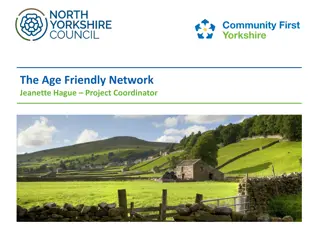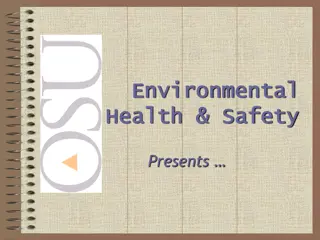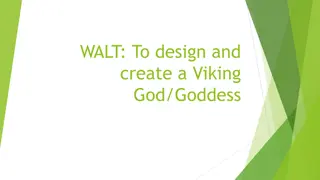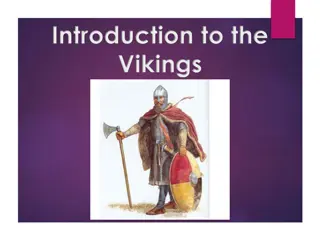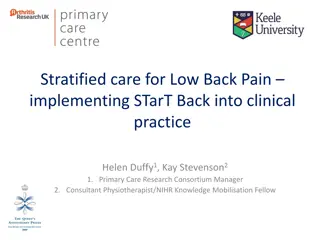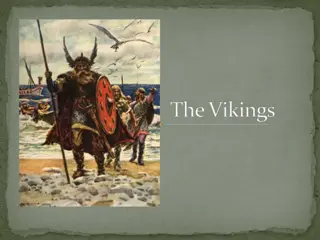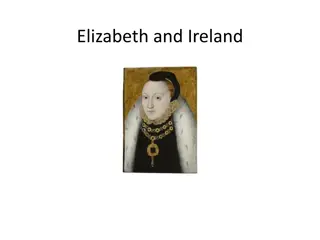Exploring the Viking Age: A Journey Back in Time
Delve into the fascinating world of the Vikings with lessons on their origins, reasons for migration, and impact on European history. Discover key vocabulary, watch video clips, and engage in activities to understand how these seafaring warriors invaded and settled in new lands.
Download Presentation

Please find below an Image/Link to download the presentation.
The content on the website is provided AS IS for your information and personal use only. It may not be sold, licensed, or shared on other websites without obtaining consent from the author.If you encounter any issues during the download, it is possible that the publisher has removed the file from their server.
You are allowed to download the files provided on this website for personal or commercial use, subject to the condition that they are used lawfully. All files are the property of their respective owners.
The content on the website is provided AS IS for your information and personal use only. It may not be sold, licensed, or shared on other websites without obtaining consent from the author.
E N D
Presentation Transcript
Year 4 History The Vikings
Lesson Objectives I can give reasons why people move away from where they were born I can explain the terms invade and settle I can understand a historic timeline
Starter Activity The Vikings What do I already know about the Vikings? What would I like to find out about the Vikings? How could I find this out?
Why do people move away from where they are born? This can be within the same country or to a different country Why do they choose to move away? How do they choose where to move?
Where did the Vikings come from? Video Clip http://www.bbc.co.uk/learningzone/clips/462. html
Who were the Vikings? The Vikings came from Denmark, Norway and Sweden. The name 'Viking' comes from a language called 'Old Norse' and means 'a pirate raid'. People who went off raiding in ships were said to be 'going Viking'. The Viking age in European history was about AD 700 to 1100. During this period many Vikings left their homes and travelled to other countries, such as Britain and Ireland. Some went to fight and steal treasure. Others settled in new lands as farmers, craftsmen or traders.
Task Timeline activity
Some Key Vocabulary Invade Settle Use a dictionary to find definitions of these two key words Invade to enter a country by military force Settle to establish or to become establish as a resident
Invasion and Settlement Invade to enter a country by military force Settle to establish or to become establish as a resident Place these words that are connected to the words invade and settle in the correct column of your grid Stay Arrive Conquer Land Visit Rest Remain Defeat Where did you place each word and why?
Linking to History Copy down the following sentence: Different groups of people have been visiting, invading and settling in Britain for a very long time.
The Vikings in Britain England had been settled by the Anglo- Saxons. In AD 787 three Viking longships landed in England. The Vikings fought the local people, then sailed away. This was the start of a fierce struggle between English and Vikings. The English called the Viking invaders 'Danes' but they came from Norway as well as Denmark. Norwegian Vikings or 'Norse' sailed to Scotland, where they made settlements. Vikings also settled on the Isle of Man. Vikings raided Wales, but few made homes there.
Why did the Vikings attack monasteries? In 793 Vikings attacked a Christian monastery (a building where monks live) in Northumbria. They were pagans (believed in many gods), not Christians like most people in Britain. A Viking robber did not think twice about robbing a Christian church. Christian monasteries in Britain were easy to attack, because the monks in the monasteries had no weapons. Churches and monasteries kept valuable treasures, such as gold, jewels and books. There were food, drink, cattle, clothes and tools too - tempting for greedy Viking.
Where did the Vikings settle? Some Viking ships brought families to Britain looking for land to farm. Good farmland was scarce in the Vikings' own countries. The parts of Britain where most Vikings settled were northern Scotland and eastern England. For 500 years, from about AD 900, Vikings ruled the north of Scotland. In Ireland, Vikings founded the city of Dublin. Viking areas in east and northern England became known as the Danelaw. Viking settlements brought new words into the English language, and new ideas about government too.
Activity Your task is to write a newspaper account of the first Viking landings in England You have two options for this task Tell the story from the English/Anglo-Saxon side Tell the story from the Viking side You don t need to write a lot, but make sure your account contains some of the key fact we have looked at
Assessment for Learning Level 2 I understand and use the words past and present when telling others about an event. I use words and phrases such as: recently, when my parents/carers were children, decades, and centuries. Level 3 I use words and phrases such as century, decade, before Christ, after, before, during to describe the passing of time. I use evidence to describe the houses and settlements of people in the past. I use words and phrases such as century, decade, before Christ, after, before, during to describe the passing of time Level 4 I use words and phrases such as era, period, century, decade, Before Christ, AD, after, before, during to describe the passing of time. With help, I choose reliable sources of factual evidence to describe the houses and settlements of people in the past. I can describe similarities and differences between some people, events and objects (artefacts) I have studied.
Viking Farms Most people lived on farms. Farmers used iron tools, such as sickles (knife used for cutting grain stalks) and hoes. They grew oats, barley and wheat, and ground the grain to make flour, porridge and ale. Vikings grew vegetables such as onions, beans and cabbages. Their farm animals included pigs, sheep, goats, cattle, geese and chickens. They used waste from the animals to keep the soil fertile. In autumn, farmers killed some animals because there was not enough food to feed through winter.
Viking Homes BBC Class Clips http://www.bbc.co.uk/learningzone/clips/464. html
Viking Houses Viking houses were built of wood, stone or blocks of turf - depending on local materials. The houses were long box-shapes with sloping thatched (covered in straw) or turf roofs. The walls were made of wattle (woven sticks, covered with mud to keep out the wind and rain). The floor of a Viking house was often dug below ground-level; perhaps this helped keep out draughts. Most houses had just one room for a family to share. Rich people's farmhouses might have a small entrance hall, a large main room, a kitchen, a bedroom and a store room. In a Viking town, houses were crowded close together along narrow streets.
What did the Vikings wear? Vikings wore similar clothes to other people in England, Scotland and Wales during this time. Men wore tunics and trousers. Women wore long dresses, with a kind of long apron. Clothes were made from wool, linen and animal skins. Most people dressed to keep warm.
What did the Vikings eat and drink? From bones, seeds and other food remains at Viking sites, we know they ate meat from farm animals, and from wild animals that they hunted, and collected foods such as berries and nuts. They cooked meat in a big stew-pot over the fire, or roasted it on an iron spit. Fish and meat were smoked or dried to preserve it. Viking bread was made from rye or barley flour. They used milk mostly to make cheese and butter, then drank the buttermilkleft over. At a feast, guests drank ale and mead. People drank out of wooden cups or drinking horns (these were made from cow-horns!) Feasts were held to mark funerals and seasonal festivals, such as midwinter. Some feasts lasted over a week!
Historical Source A From these finds at Coppergate, York, we know that the Vikings went fishing. Can you see the fishing hooks?
Historical Source B This source shows hunting equipment, found by archaeologists at Coppergate in York Many Vikings went hunting for extra food
Daily Life of the Vikings Jobs such as collecting wood for the fire, weaving cloth and baking bread took up a lot of time. Vikings did not have much furniture - perhaps a wooden table and benches for sitting and sleeping on. There were no bathrooms in Viking homes. Most people probably washed in a wooden bucket, or at the nearest stream. Instead of toilets, people used cess-pits - holes outside dug for toilet waste. The pit was usually screened by a fence. Slimy muddy cess-pits have been found by archaeologists studying the remains of the Viking town of Jorvik (modern York).
What is an archaeologist? Careers in History A person who finds out about the past They do this by looking at old objects or buildings that are buried underground
Historical Source C Vikings keep warm around a fire. This is a reconstruction with models at Jorvik Viking Centre
Activity Vikings at Home Fact File Complete the fact file booklet on the Vikings at Home The booklet goes through all of the key information we have been looking at today
Consider the role of these four groups of people in our society today Starter Activity Men Women Children Slaves
Video Clip Viking women and children http://www.bbc.co.uk/learningzone/clips/129. html
Viking men showed off by running along the side of a ship, jumping from one oar to the next. Men Viking men were all-round handymen, but some had special skills. There were boat-builders, leather-workers and potters. Most Viking men knew how to handle a boat. Most could fight if they had to, to protect the family or to support their chieftain.
Women Women baked bread. They did spinning and weaving to turn sheep wool into cloth. They looked after the children, made the family's clothes and cooked the two meals a day most families ate. Viking women spent a lot of time weaving wool, to make clothes and blankets. On the farm, women milked the cows and made cheese. This reconstruction at Jorvik shows the kind of loom (weaving machine) they used.
These are fragments of Viking cloth and weaving tools The tools included needles and shears The textiles still have traces of coloured dyes
Children's jobs included weeding vegetable patches and scaring away hungry birds Children Babies were given lucky charms, to protect them from evil spirits and sickness. Viking children did not go to school. They helped their parents at work, learned Viking history, religion and law from spoken stories and songs, not from books. By 15 or 16 they were adults. A girl's father chose her husband.
Key Vocabulary What is a slave? Using a dictionary, find out the definition of the word slave A person who is not free and is treated as someone else s property
A slave could buy his freedom - if he could scrape together enough money. Slaves Not everyone was free. Some people were slaves. They did the hardest, dirtiest jobs. They were treated poorly by their owners. People could be born slaves. The child of a slave was a slave too. Many slaves were people captured in a Viking raid. Viking traders sold slaves in markets.
Roving and Trading A young Viking man might go off on a trading voyage, or become a raider. He hoped to come home rich so he could buy a farm. Vikings met at markets. They traded by exchanging goods (a wolf skin for a pair of shoes, perhaps)
What do you do in your free time? Pastimes Viking men enjoyed swimming, wrestling and horse racing. In winter, people skated on frozen rivers, and used skis over the snow. A favourite board game was king's table. Players moved pieces around a board, like in draughts or chess. There were lots of versions of this game. Most children's toys were home-made whistles were made from leg bones of geese. Children had wooden dolls, played football, and sailed model boats.
These are playing pieces made from bone, antler and ivory They are shown alongside a fragment of a board for the king s table board game that Vikings played
Vikings enjoyed music. These are panpipes (biggest object), a bone whistle, the bridge from a lyre, and a tuning peg to tighten the strings of an instrument.
Starter What gods do people worship today? Make a list in your book
The Norse Myths When the Vikings came to Britain, they had their own pagan religion. They worshipped many gods. The old stories they told about gods, giants and monsters are known as Norse myths. In one story, Thor, the god of thunder, tries to prove his strength to the Giant King by attempting to lift a giant cat. But he could only lift one of its paws!
Viking Stories of Norse Myths Animated Video Clips http://www.bbc.co.uk/schools/primaryhistory /vikings/beliefs_and_stories/



![READ [PDF] Her Viking Dragon Warrior (Viking Ancestors: Age of Embers Book 2)](/thumb/42246/read-pdf-her-viking-dragon-warrior-viking-ancestors-age-of-embers-book-2.jpg)


